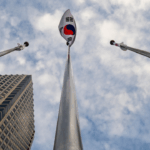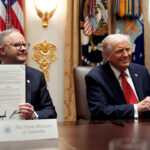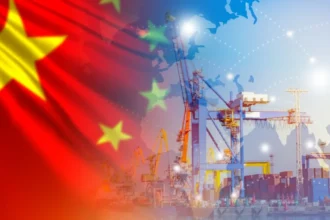At FinancialMediaGuide, we note that the world’s largest corporations have reported a combined $35 billion in costs linked to U.S. tariffs. However, many are now lowering their initial projections as new trade agreements help mitigate exposure to President Donald Trump’s protectionist measures.
Our analysts emphasize that Trump’s trade war has pushed tariffs to their highest levels since the 1930s, yet the uncertainty that long paralyzed global business is beginning to fade. Companies are now adjusting pricing strategies, restructuring supply chains, and developing long-term planning models with greater confidence.
According to FinancialMediaGuide review of corporate filings and statements from July through September, firms expect financial losses of $21–22.9 billion in 2025 and nearly $15 billion in 2026. The total now exceeds $35 billion, though this rise stems largely from Toyota’s $9.5 billion estimate. In contrast, companies such as Remy Cointreau, Pernod Ricard, and Sony have trimmed their forecasts thanks to new trade deals between the U.S., EU, and Japan.
We also observe early signs of stabilization in several sectors. Stellantis announced a $13 billion, four-year investment in U.S. manufacturing, while Pfizer and AstraZeneca have secured agreements linking drug production to tariff exemptions.
Still, FinancialMediaGuide analysts warn that uncertainty remains. President Trump recently floated the idea of an additional 100% tariff on Chinese goods, though he later admitted such a measure may be “unsustainable.”
Our research shows that companies like Nike, H&M, and SEB (Tefal) have already adjusted profit forecasts due to rising costs and softer demand.
“We remain cautious about the U.S. market,” said H&M CEO Daniel Erver. “Tariffs continue to impact margins and consumer sentiment.”
FinancialMediaGuide analysts note that price increases remain the most common corporate response to tariffs, particularly across the automotive and consumer goods sectors. Ford, Volkswagen, Toyota, and Stellantis have reported billions in tariff-related costs, but optimism is returning as potential tariff relief for U.S. automakers looms.
At Financial Media Guide, we believe the current wave of trade negotiations could mark a turning point, paving the way for a new model of global commerce-one where companies adapt to fluctuating tariff risks while governments balance protectionism with sustainable economic growth.
Earlier, we reported that LVMH returned to growth as renewed Chinese demand revives the luxury market.













